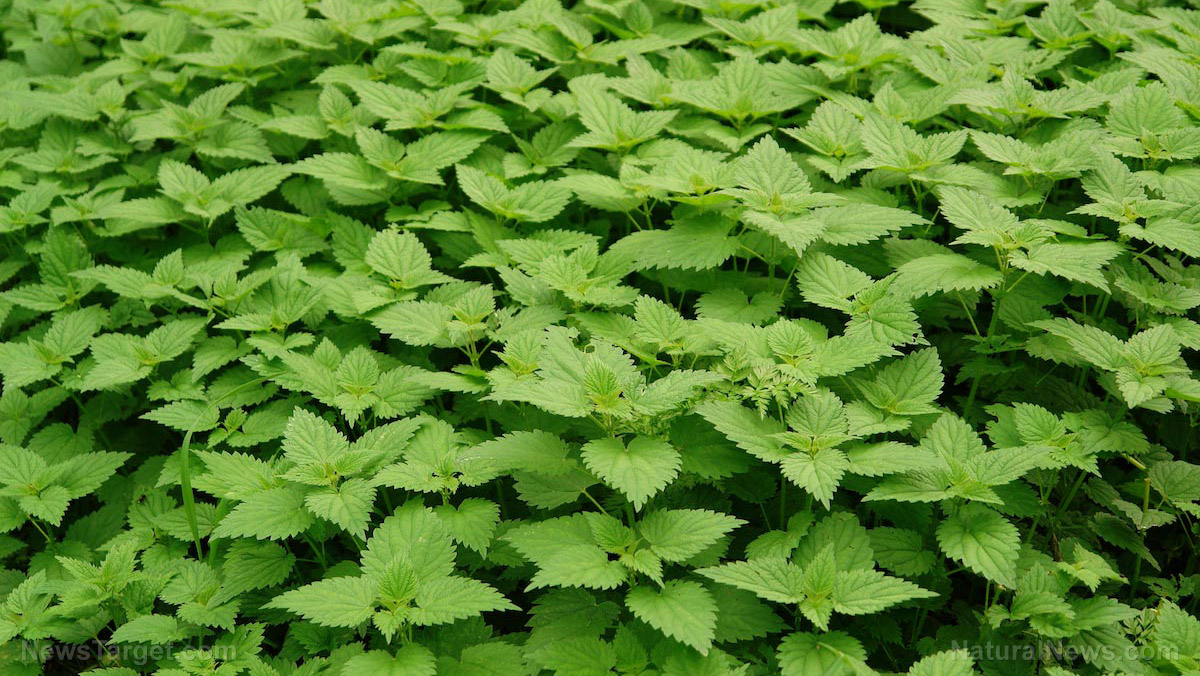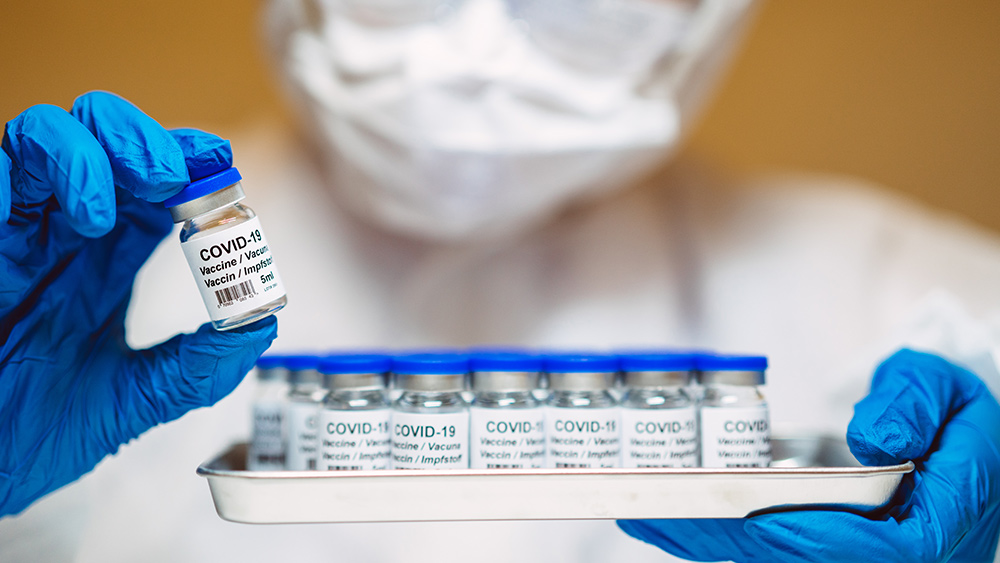 Parler
Parler Gab
Gab
- Custard apple or sugar apple has a heart-shaped or round, bumpy, green exterior that resembles overlapping scales.
- Originating in the tropical regions of the Americas, particularly in the West Indies, Central and South America, custard apple has been cultivated for thousands of years.
- Custard apples are rich in essential nutrients, including vitamins C and B, minerals like potassium, magnesium and iron, and bioactive compounds such as alkaloids, carotenoids, flavonoids and polyphenols.
- Custard apple offers numerous health benefits, including boosting immunity and promoting optimal heart health.
- Custard apples can be enjoyed fresh or incorporated into various recipes like custard apple smoothie bowl or custard apple salad.
Custard apple (Annona squamosa), also known as sugar apple or sweetsop, is a tropical fruit that has captivated taste buds and nourished bodies for centuries. With its creamy texture, sweet flavor and impressive nutrient profile, custard apple is a true gem in the world of superfoods. Its unique appearance, rich history and health benefits make it a fascinating subject for anyone interested in wellness, nutrition or exotic fruits.
Custard apple: A closer look
Custard apple is easily recognizable by its distinctive appearance. The fruit is typically heart-shaped or round, with a bumpy, green exterior that resembles overlapping scales. Once ripe, the skin may develop a yellowish hue, and the fruit yields slightly to gentle pressure. Custard apple has a soft, creamy flesh that is divided into segments, each containing a shiny black seed. The texture is often compared to custard, hence its name, and its flavor is a delightful blend of sweetness with subtle hints of vanilla and tropical fruit.Historical and cultural significance
Custard apple has a long and storied history. Believed to have originated in the tropical regions of the Americas, particularly in the West Indies and parts of Central and South America, it has been cultivated for thousands of years. Historical records suggest that the fruit was introduced to Asia, Africa and other tropical regions by Spanish and Portuguese explorers during the 16th century. Today, it is widely grown in countries such as India, Thailand, the Philippines, Brazil and Mexico, where it thrives in warm, humid climates. (Related: Superfruits for good health: Boost your daily protein intake with delicious apple cinnamon muffins.)Nutritional composition and phytonutrients
Custard apples are not only delicious but also packed with essential nutrients and bioactive compounds. They are an excellent source of vitamin C, which supports optimal immune function and skin health, and B vitamins, including thiamine and riboflavin, which are vital for energy metabolism. The fruit is also rich in minerals such as potassium, magnesium and iron, which play key roles in maintaining heart health, muscle function and blood circulation. One of the most remarkable qualities of custard apples is their high levels of phytonutrients -- plant-based compounds with potent health benefits -- such as:- Alkaloids - Found in the seeds and leaves of custard apple, alkaloids have been studied for their potential anticancer and antimicrobial properties.
- Carotenoids - Some of these pigments, which give the fruit its yellowish hue, are precursors to vitamin A and can support eye health.
- Flavonoids - These compounds have been linked to improved heart health, reduced risk of chronic diseases and enhanced cognitive function.
- Polyphenols - Known for their antioxidant properties, polyphenols help combat oxidative stress and reduce inflammation in the body.
Health benefits and potential therapeutic uses
The nutrient-dense profile of sweet and delicious custard apples makes them a valuable addition to a healthy diet. Research suggests that consuming this fruit may help prevent or alleviate a variety of health conditions:- Boosts immunity – The high vitamin C content of custard apples can strengthen the immune system and help the body fight off infections and illnesses.
- Promotes heart health – The potassium and magnesium in custard apples help regulate blood pressure and support optimal cardiovascular function.
- Supports digestive health – Custard apples are a good source of dietary fiber, which promotes healthy digestion and prevents constipation.
- Enhances skin health – Antioxidants like vitamin C and polyphenols protect the skin from damage caused by free radicals, reducing signs of aging and promoting a healthy glow.
- May aid in cancer prevention – Preliminary studies suggest that the alkaloids and flavonoids in custard apples may have anticancer properties, though more research is needed to confirm these effects.
Culinary applications and recipe ideas
While they can be eaten on their own, custard apples can also be enjoyed in a variety of ways, from simple snacks to elaborate desserts. Here are a few recipe ideas that showcase the fruit’s versatility:- Custard apple smoothie bowl – Blend the flesh of custard apples with yogurt, banana and a splash of almond milk for a refreshing and nutritious breakfast.
- Custard apple salad – Mix custard apple chunks with fresh greens, pomegranate seeds and a citrus vinaigrette for a tropical twist on a classic salad.
- Custard apple jam – Cook the fruit with sugar and lemon juice to create a sweet, spreadable jam perfect for toast or pastries.
- Custard apple pudding – Layer custard apple puree with chia seeds and coconut cream for a healthy, no-bake dessert.
- Custard apple ice cream – Combine custard apple pulp with coconut milk, honey and vanilla extract, then freeze for a creamy, dairy-free treat.
More related stories:
Hydration tips for winter: Why electrolytes are your secret weapon. Support eye health with pumpkin, a superfood source of beta carotene. Health benefits of sorrel leaves: An ancient remedy backed by modern science. Sources include: Brighteon.AI NaturalNews.com Brighteon.comThe power of dates: A sweet superfood from ancient times
By Zoey Sky // Share
3 Evidence-based natural allergy remedies
By News Editors // Share
Clogged arteries? Five ways garlic can help
By News Editors // Share
Italy joins U.S. in exiting WHO: A bold stand for national sovereignty and health freedom
By Willow Tohi // Share
Governments continue to obscure COVID-19 vaccine data amid rising concerns over excess deaths
By patricklewis // Share
Tech giant Microsoft backs EXTINCTION with its support of carbon capture programs
By ramontomeydw // Share
Germany to resume arms exports to Israel despite repeated ceasefire violations
By isabelle // Share










